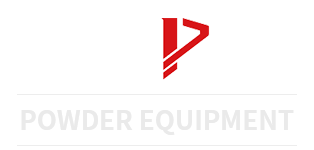ALPA Knowledge Class: Modification of Montmorillonite and Its Application in Lithium Battery Solid Electrolyte
Montmorillonite is a typical water-bearing layered silicate mineral with a large specific surface area and strong ion exchange. It is widely used in the preparation of nanocomposites and is also the most commonly used clay mineral in the preparation of composite solid electrolytes. Through organic modification treatment, lithium salt modification treatment on montmorillonite, or by reducing the anisotropy of the electrolyte system, the composite solid electrolyte exhibits higher ionic conductivity.
Organic modification
Organic modification means that through organic intercalation, the compatibility of the smectite filler and the polymer matrix is improved, and the interval between the smectite layers can be enlarged, which is beneficial to the movement of ions between the layers and improves the performance of the electrolyte system.
Lithium-montmorillonite and lithium-montmorillonite intercalated with polyacrylonitrile were used as inorganic fillers to combine with polyacrylonitrile to prepare composite solid electrolytes. Under the same conditions, lithium-montmorillonite intercalated with polyacrylonitrile was used to prepare composite solid electrolytes. The ionic conductivity of the prepared composite solid electrolyte is one order of magnitude higher than the former.
Lithium salt modification
The lithium salt modification treatment is to insert lithium ions between the montmorillonite layers as a lithium source through ion exchange, so that the prepared composite solid electrolyte becomes a single-ion conductor, so as to prevent the movement of anions and cations in the electrolyte to form concentration polarization, resulting in degradation of battery performance .
The use of polyoxyethylene intercalation hectorite can prepare organic-inorganic mixed ion conductor materials. Within a certain temperature range, the ionic conductivity of polyoxyethylene/lithium-montmorillonite composites is much higher than that of lithium-montmorillonite Delithiation, which shows that the negatively charged silicate sheet makes the charge transport carrier in the electrolyte limited to cations.
Reduce the anisotropy of the electrolyte system
The unique layer structure of montmorillonite makes it easy to form a preferred orientation arrangement in the electrolyte system. When the non-conductive layer is perpendicular to the ion current path, the ionic conductivity of the composite electrolyte will be reduced to a certain extent. Therefore, some scholars have proposed that methods such as melt intercalation and ultrasonic stripping should be used to reduce the anisotropy of the electrolyte system to avoid negative effects on ion conductivity.
Compared with the solution intercalation method, the polymer/layered silicate composite prepared by the melt intercalation method can minimize the preferred orientation of the layered silicate, make the material have good isotropy, and avoid the removal of excess due to cleaning. The polymer affects the migration rate of lithium ions.
Intercalation or delaminating montmorillonite has a greater effect on the ionic conductivity of the electrolyte. The exfoliated clay can provide more mobile and conductive ions, and the cations in the intercalated clay will be trapped between the structural unit layers of the clay, resulting in a decrease in ionic conductivity.
Source: Powder Technology Network
Overview of graphite spheroidization technology for carbon anode used in lithium battery industry
- Lithium-ion battery anode materials include flake natural graphite, mesophase carbon microspheres and petroleum coke-based artificial graphite.
- Carbon material is currently the main negative electrode material used in lithium-ion batteries, and its performance affects the quality, cost and safety of lithium-ion batteries.
- How to improve the safety of lithium-ion batteries, especially how to develop negative electrode materials that meet the requirements of power batteries, is a concern for materials companies.
- In addition to raw materials and process formulas, which determine the performance of negative electrode materials, it is also one of the important factors to provide equipment and technologies such as carbon graphite crushing, spheroidization, shaping, and classification with stable performance and high efficiency and energy saving.
Milling stage:
Whether it is artificial graphite or natural graphite, it is crushed several times through several sets of CSM710 units (the naming method of each manufacturer is different) to become a D50:20μm powder. According to the different raw materials, the number of pulverization is different: For example, large scale natural graphite is generally crushed 4-6 times, and artificial graphite is generally crushed 1~3 times.
Spheroidization stage:
Generally, they tend to use a system of CSM410 and horizontal high-precision turbo classifiers for shaping. The classifier is used to remove fine powder produced by shaping in time. According to the different raw materials, the number of shaping is different. Natural graphite generally 8-12 times of shaping, artificial graphite generally 2 to 4 times of shaping.
(After long-term process practice, we have explored and optimized different spheroidizing process schemes for natural flake graphite and artificial graphite, for your reference.)
Natural flake graphite spheroidization process
Raw materials are milled by a single set of CSM710 special milling machine, particle size of raw materials is milled to a fine powder with particle size of D50: 21-23μm, which is convenient for the next process to be spherical. Through the CSM510 type spheroidizing machine equipped with the FW260 high efficiency classifier series unit process, the particles are prepared into spheroidized graphite particles with particle size of D50: 19-20μm, and CSM410 spheroidizing machine is equipped with FW230 high efficiency classifier series unit. Change the particle size to D50: 15-17μm potato-shaped graphite particles;
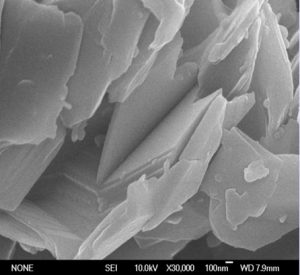
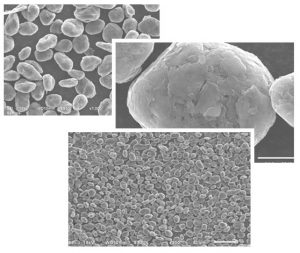
(The picture on the left is the raw material of flake graphite, and the picture on the right is the product after spheroidization of flake graphite)
Artificial graphite spheroidization process
Raw materials are uniformly sent to the CSM710 special mill single set series unit through the screw feed for ultra-fine grinding. Raw material particle size is milled to D50:23-25μm fine powder, which is convenient for the next process to be spheroidized. Through 3 sets of CSM510 type spheroidizing machines equipped with FW260 high-efficiency classifiers and several sets of series unit processes, the particles are prepared into graphite powder with particle size of D50: 19-21μm, and the required qualified potato-shaped balls are obtained through the special graphite surface modification and shaping equipment.


(The picture on the left is the raw material of artificial graphite carbon, and the picture on the right is the product after shaping the raw material of artificial graphite)
Comparison of milled particle size of graphite spheroidization technology

Graphite carbon raw material
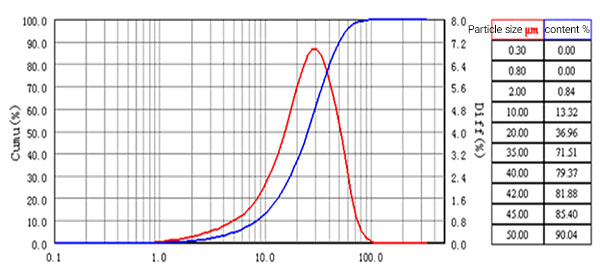
Milled by CSM710
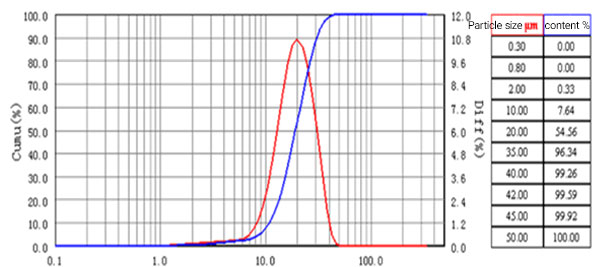
Spherical by CSM510

Shaping by CSM410
Meet at CIBF2021, ALPA is waiting for you!
On March 19th, the "14th China International Battery Technology Exchange/Exhibition (CIBF2021)" hosted by China Chemical and Physical Power Industry Association opened at Shenzhen Convention and Exhibition Center. ALPA representatives brought MQW40 fluidized bed jet mill and CSM510 -VD mechanical shredder will be exhibited, the booth is located at No. 7T062.
CIBF2021 is the largest exhibition event in the international battery industry. This year’s technical exchange will continue with the theme of "power batteries and energy storage batteries". The latest developments in AC power batteries, energy storage batteries and various materials will be highlighted in the past two years. my country has made a series of achievements in the field of power batteries for various passenger cars, new energy buses and logistics vehicles, and in the field of new energy energy storage.
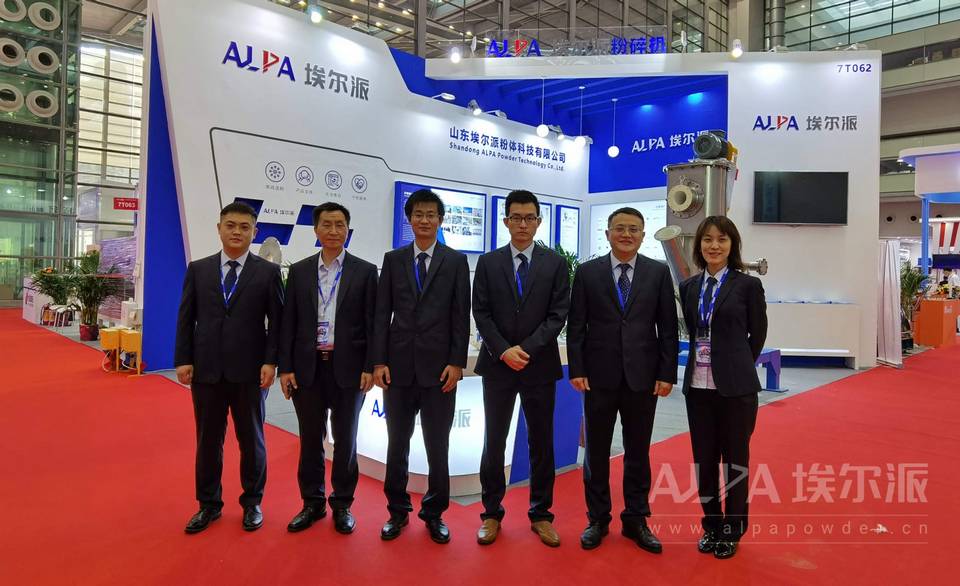
With the rapid development of mobile phones, computers, and new energy vehicles, the handling of battery materials has become the focus and difficulty of various companies. In the process of crushing raw materials, many materials are crushed and impurities, battery self-discharge capacity is reduced, energy consumption and production efficiency are not matched, product performance is poor and safety is poor, battery low voltage, etc. are all production problems faced by battery material companies.
As a well-known provider of ultrafine powder solutions in China, ALPA has developed a complete set of battery material processing solutions after years of research and development and innovation, which can provide cathode material crushing and grading, anode material crushing and shaping, battery fluid material crushing and grading, and The integrated design of the powder process technology meets the complex process requirements required for battery material processing.
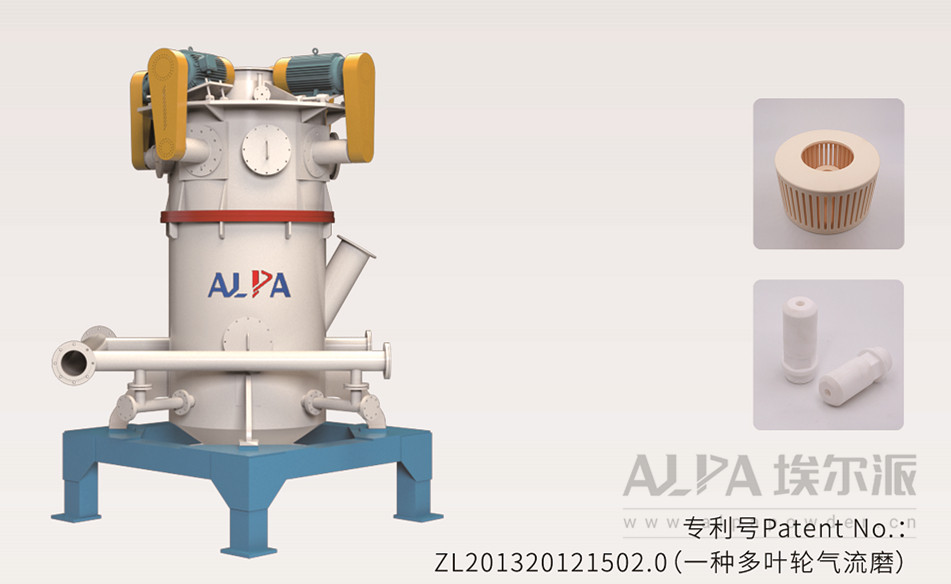
The MQW40 fluidized bed jet mill at the exhibition is an innovative high-precision jet mill with a built-in precision grading wheel. It has the advantages of good particle shape, narrow particle size distribution, high product purity, less dust, and low noise. It is suitable for heat sensitivity. The crushing of volatile and high value-added materials is often used in the crushing of single crystal ternary, lithium hydroxide, lithium carbonate, lithium iron phosphate, etc.
With advanced technology and excellent products, ALPA successfully reached a strategic cooperation with a battery material company in Shenzhen and provided it with a jet mill production line for battery material crushing. The company is the world’s largest manufacturer of lithium iron phosphate batteries with the largest production capacity, and is also the world’s leading provider of solar energy and energy storage solutions. When developing new products, it proactively contacted ALPA for procurement, and ALPA successfully entered the company’s high-quality supplier system.
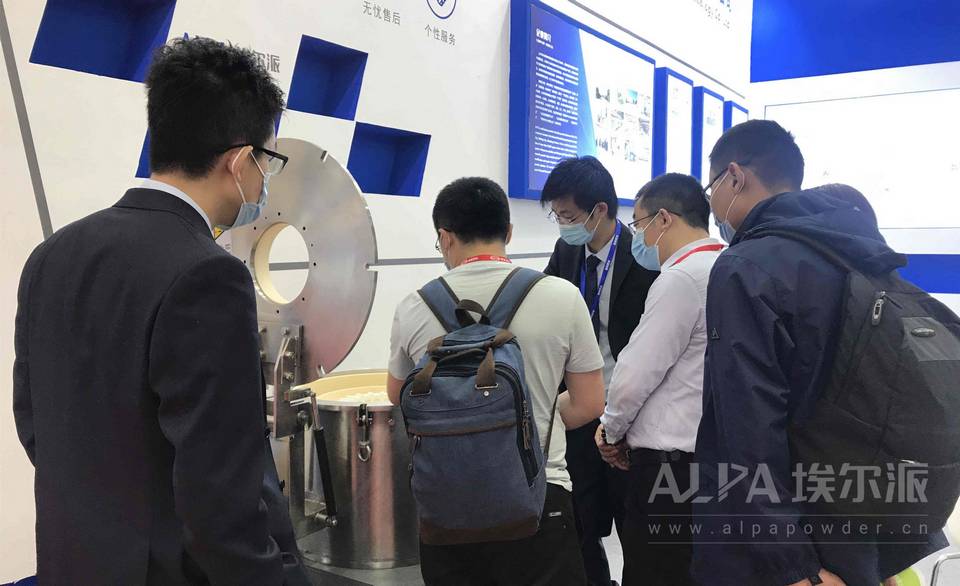
In addition, through day-to-day technological innovation, ALPA's ceramic molding technology has also been significantly improved. The maximum linear velocity of key components such as ceramic crushing disc and classifying wheel exceeds 130m/s. In the production process, the intake of magnetic substances is less than 30PPB, the moisture increase is less than 50PPM, and the filtration accuracy of the plastic sintered plate filtering and dust removal can reach 0.1μm. The hourly production capacity of ternary materials, lithium cobalt oxide, and lithium manganate is up to 1 ton, and the hourly production capacity of lithium iron phosphate and lithium carbonate is up to 3 tons, saving 50% of energy consumption.
For example, the CSM-510VD mechanical pulverizer at the exhibition is a high-efficiency pulverizer that integrates smashing and grading. The key components such as hammer head, gear ring, and grading wheel are all made of alumina, zirconia, silicon carbide and other ceramic materials. To meet the production requirements of high-purity materials, it is widely used in the crushing of single crystal ternary materials, ordinary ternary materials, silicon carbon anode, lithium manganate, lithium cobaltate, lithium iron phosphate and other materials.
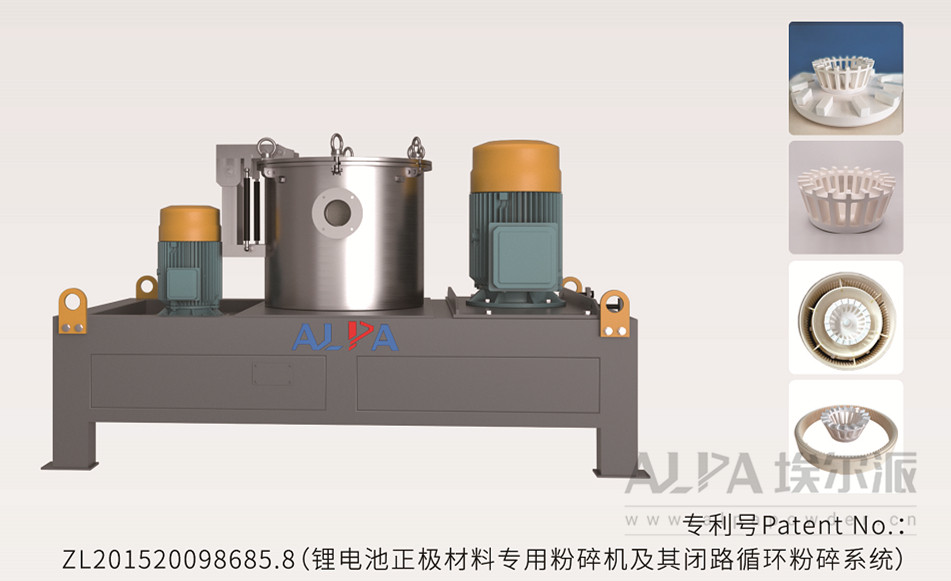
As a leader in the domestic ultrafine grinding industry, ALPA firmly believes in the power of quality and service, and has both soft and hard capabilities. It has gradually expanded the coverage of domestic and international markets. It has reached cooperation with giants in the battery material industry in many countries and has been highly praised by customers. .
Stepping on the stone leaves a mark, scratching the iron with marks. Development never stops, and backwardness will be eliminated. ALPA will definitely keep up with the pace of the times, perfectly integrate offline and online marketing networks, further expand brand strength and influence, and create brand-new results!
ALPA creates high-quality solutions to promote the healthy development of the battery material industry
With the progress of the times and the improvement of living standards, the development of mobile phones, computers, digital cameras, new energy vehicles and other industries is changing with each passing day, and the demand for lithium batteries is also increasing. Due to the technological innovation of lithium battery manufacturers, residents' demand for lithium battery products has also risen. As a leader in the powder industry, ALPA has reached cooperation with a number of well-known battery manufacturers and established a good supply and demand link with excellent crushing equipment and complete industry solutions.
Due to significant performance advantages, in recent years, the proportion of lithium batteries in the battery industry has continued to increase. China's lithium battery market is very broad, and more and more people are engaged in the lithium battery material industry. In the field of lithium-ion batteries, since the performance of the positive electrode material directly affects the performance of the lithium-ion battery, the cost of the positive electrode material determines the cost of the battery. It is for this reason that "the development of lithium-ion cathode materials has led the development of lithium-ion batteries".
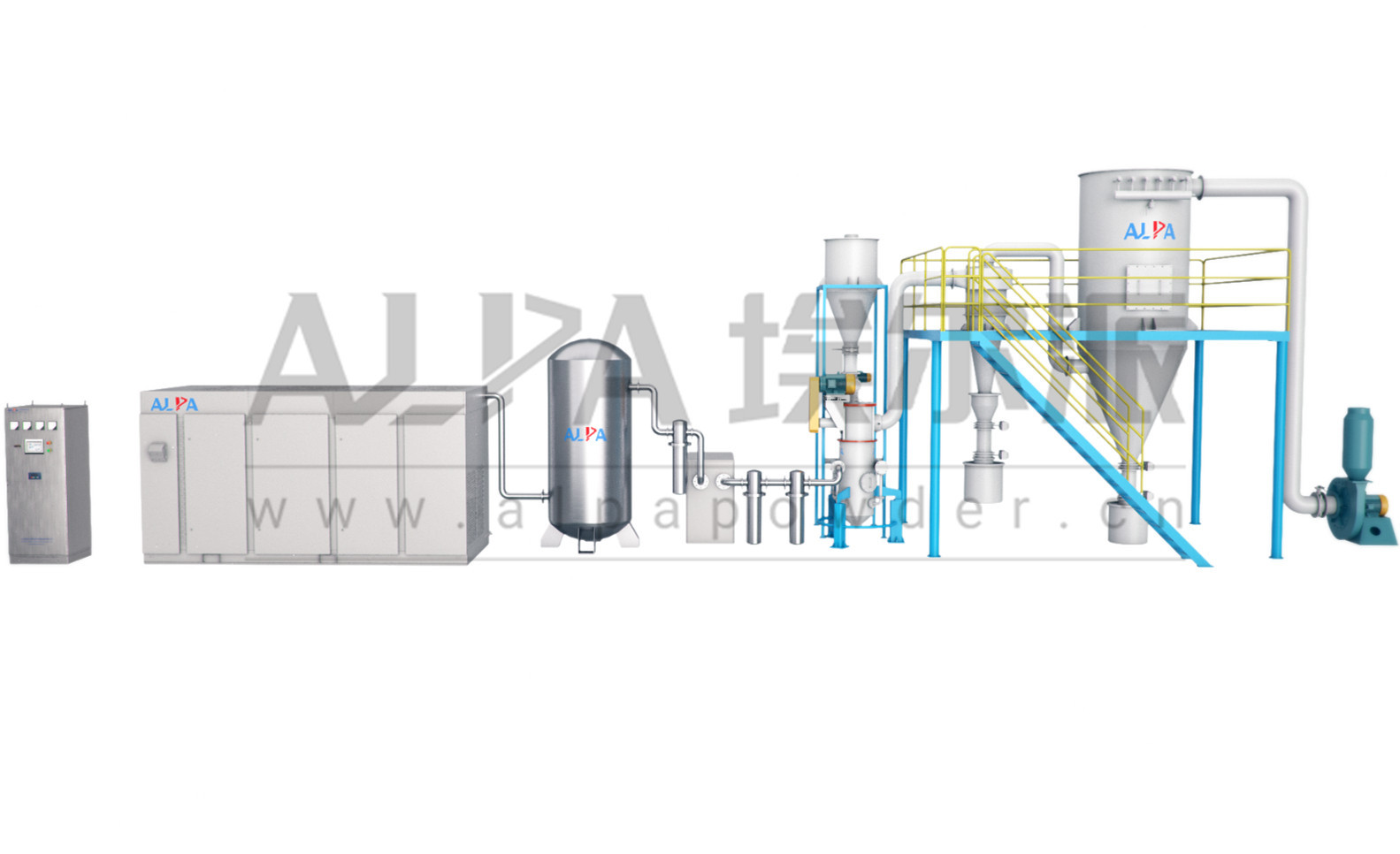
MQW series-single rotor-system layout drawing
The crushing of lithium battery cathode materials is a very critical process. Currently, commonly used equipment includes jet mills and mechanical mills. Air jet pulverization equipment is widely used in the pulverization of battery electrode materials. The battery electrode material needs to be processed into battery electrode powder by a jet mill, and the fineness and particle size of the powder affect the active quality of the electrode material. At present, the more commonly used cathode materials include lithium carbonate, lithium cobalt oxide, lithium manganate, lithium iron phosphate, ternary lithium, etc., and the more commonly used anode materials include graphite and carbon black.
The jet mill uses the kinetic energy of the high-speed airflow to make particles collide, rub, shear and smash each other. It has the characteristics of continuous production process and large capacity. But its shortcomings are also very obvious, that is, low energy utilization and high energy consumption. At present, ultra-fine pulverization technology should seek ways to reduce energy consumption, increase energy utilization, and improve electrode material processing technology to meet the trend and requirements of building an energy-saving and environmentally-friendly society.
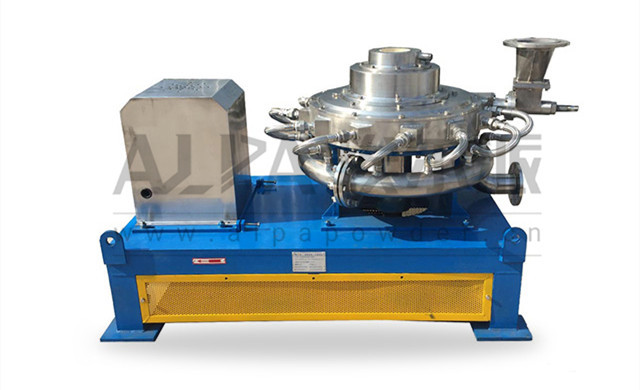
MQPW series
ALPA pays close attention to domestic market demand and technological development trends, continuously introduces mature technologies at home and abroad, selectively adopts and combines its own advantages to carry out pioneering and innovation. The MQW/MQPW model jet mill and CSM-VD series mechanical Widely acclaimed by users in the battery industry.
In addition, in the field of battery materials, ALPA can also provide crushing and shaping of anode materials, crushing and grading of battery liquid materials, and system integration, namely dust-free feeding, magnetic separation, powder transportation, crushing, ultra-fine grinding, metering and packaging, automatic batching, and intelligent control. Integrated design of other powder process technology. ALPA has accumulated a wealth of experience in long-term practice, and is committed to enabling users to maximize economic benefits with the best modern technology and the most economical and effective processing methods.
